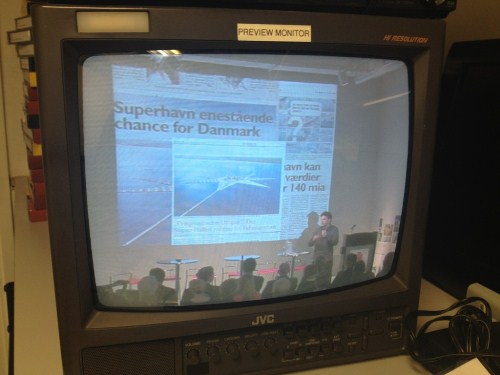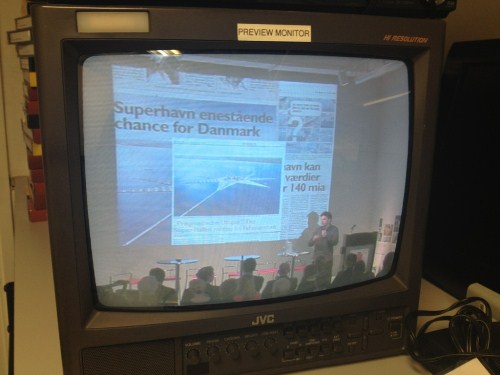by: admin

Going meta-digital via the Center for Architecture’s live video feed via Technology Coordinator Ian Harris’ Twitter handle @ianxharris: “Bjarke Ingels presenting now @CenterForArch for Global Dialogues committee moderated by Ned Cramer of @architectmag: pic.twitter.com/glsXeaGs.”
Ian Harris
Event: Going Viral: Blurred Borders
Location: Center for Architecture, 05.21.12
Panelists: Bjarke Ingels of Bjarke Ingels Group (BIG); Toru Hasegawa and Mark Collins, Morpholio and Columbia University; David Basulto and David Assael, Co-founders, ArchDaily
Moderator: Ned Cramer, Editor-in-Chief, Architect
Organizer: AIANY Global Dialogues Committee
Sponsors: Microsol Resources and Autodesk
The AIA New York Chapter’s Global Dialogues Committee hosted the second event in its series on “uncovered connections.” For Going Viral: Blurred Borders, several panelists – from architects to educators to software developers – discussed the impact of social media on the design process and practices around the world.
Bjarke Ingels admitted that his firm, BIG, receives most commissions traditionally – through client meetings or competitions – but he’s frustrated that “ultimately, we [designers] all leave it up to those with money, i.e. developers, to come up with the big ideas, like chefs who have to cook with ingredients that someone else has bought for them.” He encouraged young practices to engage in “proactive public participation” to propose better urban spaces. Though BIG hasn’t always been successful at getting projects built this way, Ingels thinks that though “they are often radical ideas, putting them out there can pave the way for future projects.”
Bridging between academia and practice, Toru Hasegawa and Mark Collins, both faculty at Columbia University’s Graduate School of Architecture, Planning & Preservation (GSAPP), founded the Cloud Lab in 2010. Their research explores intersections between the human body and technology. “The way we view our environment is not necessarily the way we see it through our eyes; devices amplify our behaviors and how we relate to the environment,” said Hasegawa.
This research led to the development of the Morpholio project, a new portfolio app for designers. “Your portfolio should be a mirror of yourself as a designer, and Morpholio explores how the world sees you as a designer,” said Collins. The app incorporates familiar concepts from academia such as pinups and desk crits. Users can provide feedback on designers’ work, but it’s more than just “liking” or commenting; the app also monitors users’ browsing habits, delivering data on how long images are viewed (“eye time,” measured in “seconds of attention”) and zooming habits (“touches and taps”). With this valuable insight, “designers can reorder their portfolios based on how people have engaged the work,” Collins explained.
Many architects seek design inspiration from the website ArchDaily. David Basulto and David Assael founded the website in Chile in 2006 as a way to create exposure for work by young designers who haven’t yet been discovered by traditional publications. ArchDaily readership has exploded, reaching a worldwide audience, and now even print publications use it as a source for story ideas. According to Assael, this form of social media is about much more than just pretty pictures: “We’re focused on showcasing projects that can help other architects.”
Watch the entire program on the Center for Architecture’s Vimeo page.
Murrye Bernard is a freelance architecture writer and a contributing editor to Contract magazine and e-Oculus. www.murrye.com









